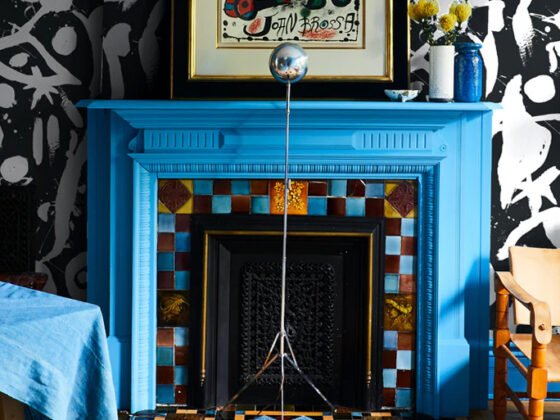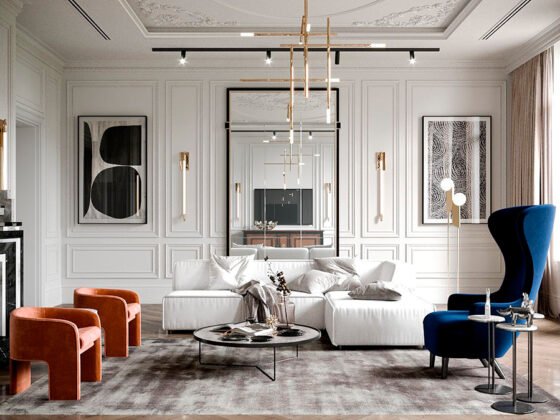Our living spaces are not just physical shelters; they are reflections of our personalities, tastes, and aspirations. They are canvases upon which we can paint our unique stories, creating environments that resonate with our emotions and values. The realm of interior design offers a rich tapestry of styles, each with its own history, aesthetic principles, and cultural influences.
Whether you’re a seasoned design enthusiast or a newcomer seeking inspiration, understanding the various interior styles can help you craft spaces that align with your vision and bring your surroundings to life.
From the opulent elegance of Baroque to the minimalistic serenity of Scandinavian design, from the vibrant colours of Bohemian chic to the clean lines of Mid-Century Modern, we’ll delve into the characteristics, origins, and key elements that define these styles. Along the way, you’ll discover how culture, history, and personal preferences have shaped the way we design and decorate our interiors.
Whether you’re looking to embark on a full-scale home renovation or simply want to infuse a touch of a particular style into your space, this exploration of interior styles will serve as your compass. So, let’s open the doors to this world of creativity and innovation, where your home becomes a canvas waiting to be adorned with the brushstrokes of your unique style.
Interior design encompasses a wide range of styles, each with its own unique characteristics, influences, and aesthetics. With this article, we commence a series of articles, as each interior style needs to be discussed separately and in detail.
Here’s a list of some of the most prominent interior design styles (click on each to find more about it):
- Contemporary: An ever-evolving style that incorporates current design trends. It emphasizes open spaces, neutral color palettes, and a mix of materials and textures.
- Modern: Characterized by clean lines, minimalism, and a focus on functionality. It often features neutral colors and materials like glass, metal, and concrete.
- Classic: Draws inspiration from classic European design, with rich, ornate details, woodwork, and antique furniture. It often features a warm color palette.
- Modern Classic or Transitional: A blend of traditional and contemporary styles, transitional design combines classic elements with modern sensibilities. It aims for a balance between comfort and sophistication.
- Mid-Century Modern: Inspired by the design aesthetics of the mid-20th century, this style emphasizes simplicity, clean lines, and organic shapes. It often features iconic furniture pieces.
- Industrial: Takes cues from factories and warehouses, featuring exposed brick, metal, and utilitarian design elements. It often includes open spaces and high ceilings.
- Scandinavian: Known for its simplicity, functionality, and use of natural materials like wood and stone. It often features a white color palette, with pops of color through decor.
- Bohemian: Embraces an eclectic mix of colors, patterns, and textures from around the world. It often features layered textiles, plants, and a relaxed, boho-chic vibe.
- Coastal: Inspired by beach and seaside living, coastal design often incorporates light and airy color palettes, natural materials, and nautical elements like shells and rope.
- Rustic: Celebrates the beauty of natural materials like wood and stone. It often includes warm, earthy colors and a cozy, inviting atmosphere.
- Cottage: A cozy and charming style that often includes vintage or antique furniture, floral patterns, and a warm, homey feel.
- Art Deco: Influenced by the glamour of the 1920s and 1930s, Art Deco design features geometric shapes, bold colors, and luxurious materials like marble and gold.
- Art Nouveau: Inspired by natural forms and curves, this style often includes organic, flowing designs, floral motifs, and stained glass.
- Minimalist: Focuses on simplicity, with a “less is more” approach. Minimalist design features clean lines, neutral colors, and a sense of openness and order.
- Shabby Chic: Combines vintage, distressed furniture with soft, pastel colors and floral patterns. It aims to create a romantic, lived-in look.
- Eclectic: A mix-and-match style that incorporates elements from various design styles. Eclectic design celebrates individuality and personal expression.
- Japanese Zen: Rooted in Zen philosophy, this style emphasizes simplicity, natural materials, and a sense of tranquility. It often includes minimalist furniture and tatami mats.
- Mediterranean: Inspired by the coastal regions of southern Europe, Mediterranean design features warm colors, rustic textures, and ornate details like wrought iron and tile.
- Tropical: Evokes the lush beauty of tropical destinations with vibrant colors, botanical prints, and natural materials like bamboo and rattan.
- Futuristic: Pushes the boundaries of design with innovative materials, technology integration, and a focus on sleek, futuristic aesthetics.
These are just some, most popular interior design styles that exist. Each of them offers a unique way to express personal tastes and create spaces that resonate with individual preferences and lifestyles.











